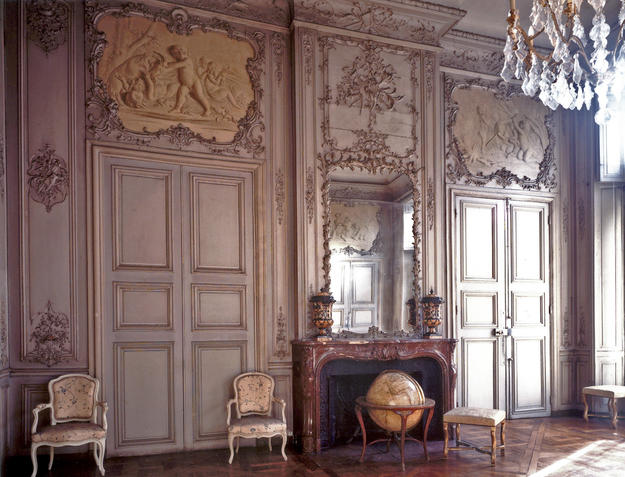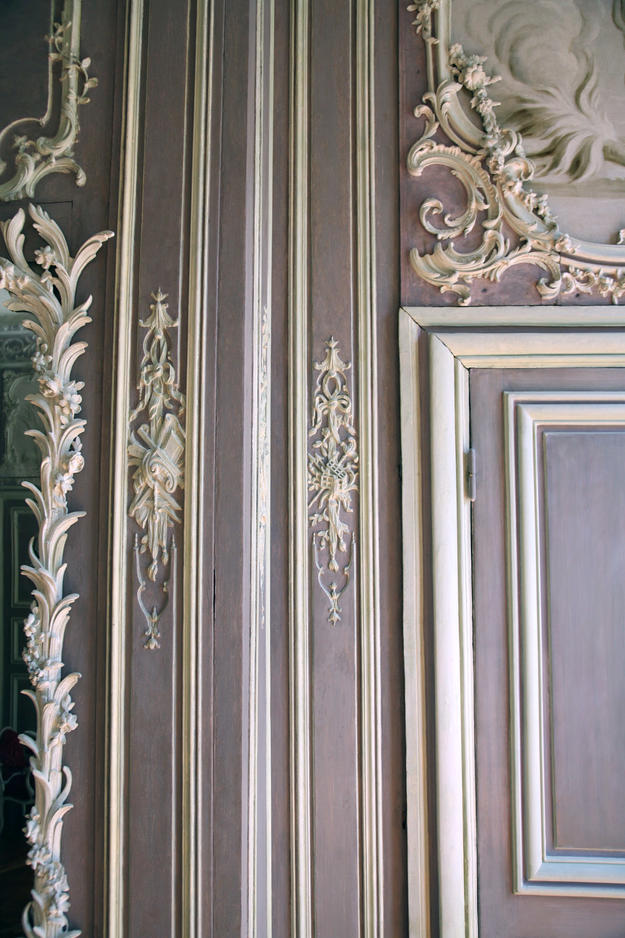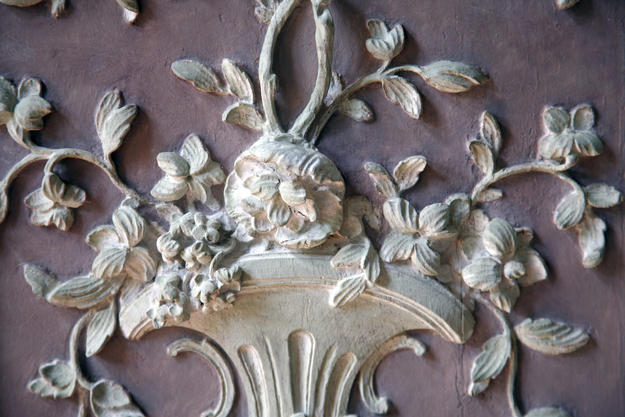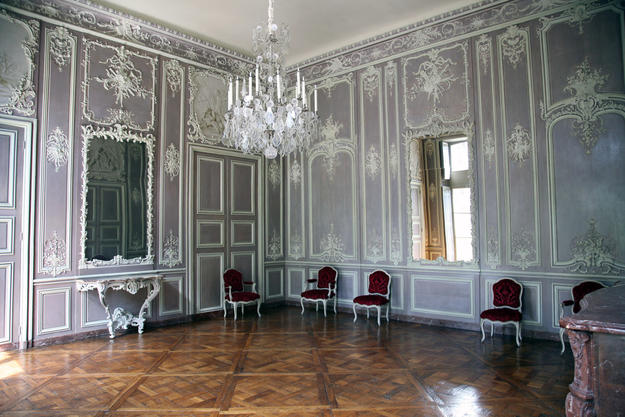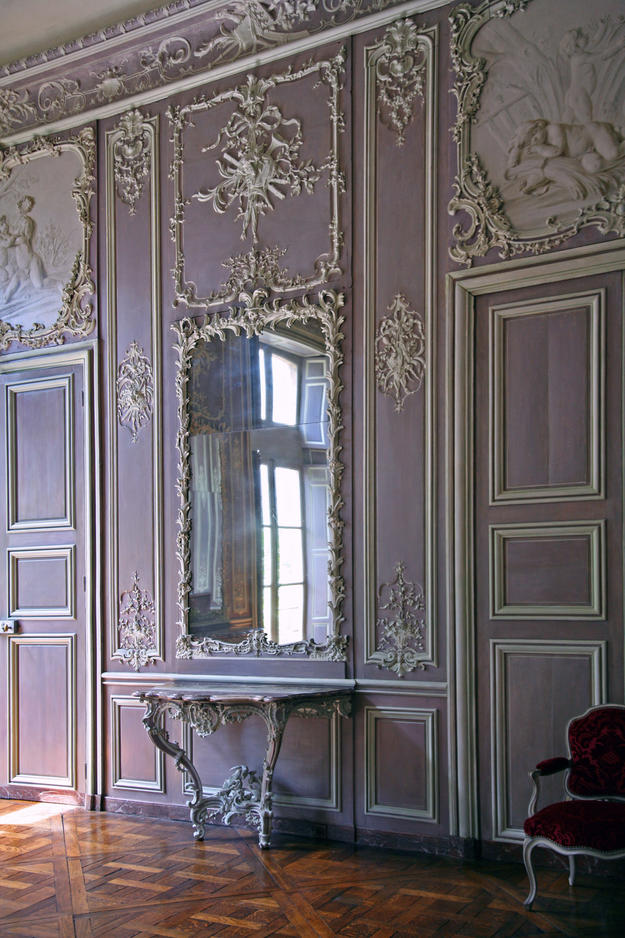Salon de Musique, Bibliothèque de L’arsenal
Constructed in the seventeenth and eighteenth centuries, this complex occupied a vast territory between the Seine River and the Bastille. It was an arsenal until the reign of Louis XIII, then became a private library, which was eventually opened to the public. In the second half of the eighteenth century, the Marquis de Paulmy, a former ambassador and minister, housed his noted book collection in the arsenal. During the French Revolution, the library was seized and a decree of April 28, 1797, officially created the Bibliothèque Nationale de l’Arsenal and opened it to the public. In the nineteenth century, the arsenal’s brightest moments were when the librarian Charles Nodier created a welcoming atmosphere for the intellectual elite of the time including Alfred de Musset and Victor Hugo.
A constant dialogue among conservation professionals
When a World Monuments Fund team assessed the site, a program of conservation and protection of the art was, and the boiseries (ornately carved wood panels) were dismantled for the first time since the eighteenth century, uncovering preparatory drawings on the walls. A survey was carried out to safeguard the drawings and graffiti. It was discovered that, contrary to a previous interpretation of historic documents, the decor was created specifically for this room. The creation of a harmonious effect was essential in protecting the room’s integrity. The many challenges of restoring the original color scheme and assuring proper technical conservation of the cornices, boiseries, and four allegorical paintings that were to be rehung necessitated constant dialogue among conservation professionals collaborating on the room.
The Salon de Musique returned to its previous beauty
The arsenal’s Salon de Musique dates back to the mid-1740s when the Comte d’Eu commissioned the architect Antoine-Nicolas Dauphin and the sculptor, Angrand, to decorate the interiors. This artfully enhanced room became highly fashionable in Parisian culture, but was nearly forgotten in recent decades. WMF’s involvement with the restoration has returned the Salon de Musique to its previous beauty. It has also provided the opportunity to more fully understand the style and taste of the period.

